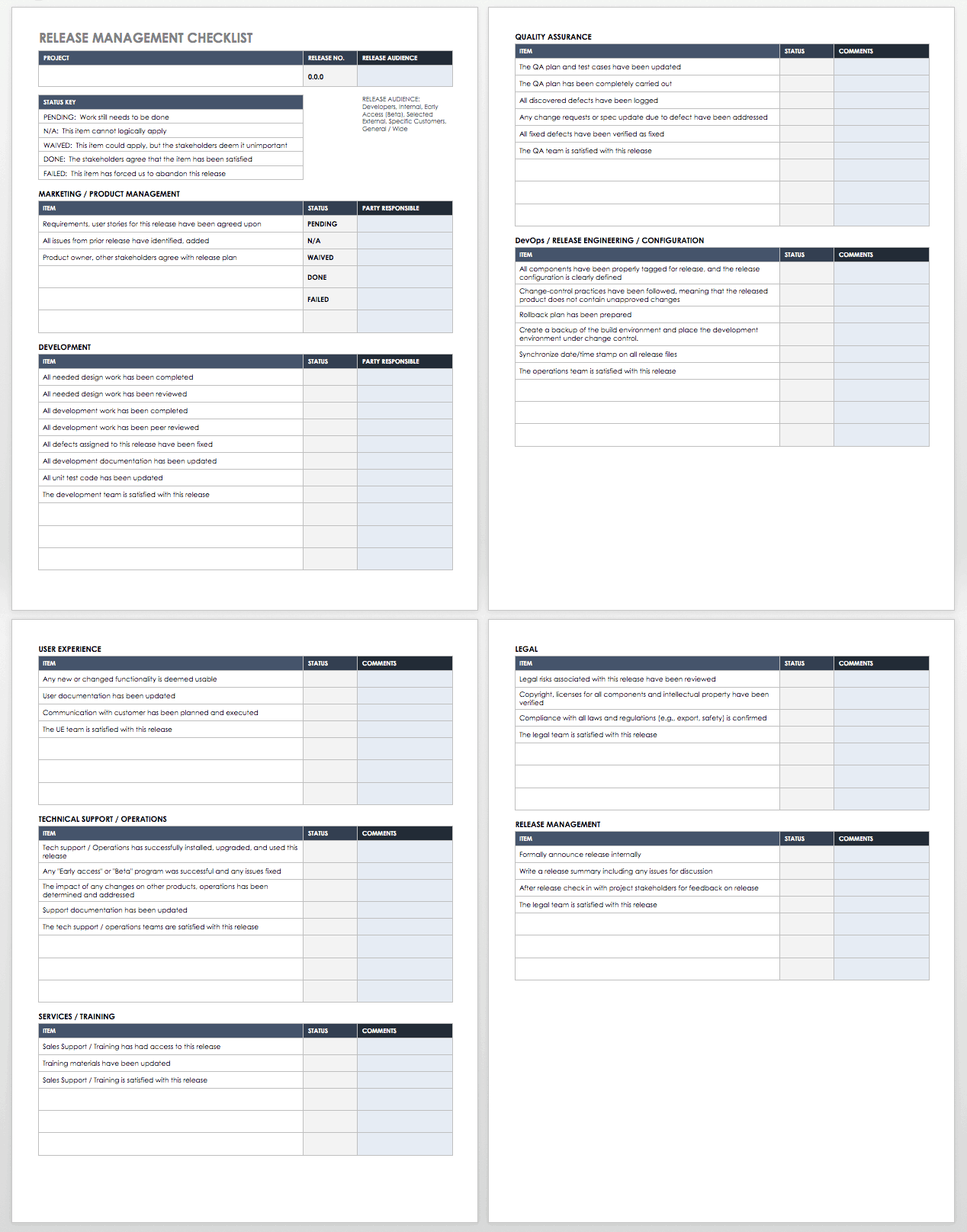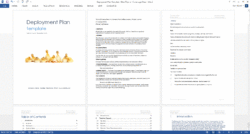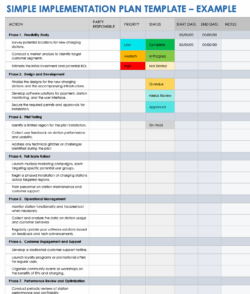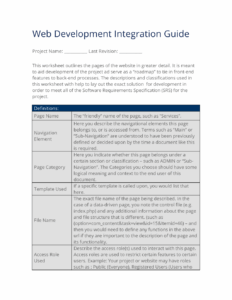So, you’re gearing up for a release. Exciting, right? But before you hit that big “go” button, let’s talk about something that might not be as glamorous as a launch party, but is infinitely more important: your documentation. Specifically, we’re diving deep into the world of a release management documentation template. Think of it as your release’s blueprint, a comprehensive guide that ensures everyone’s on the same page, from development to deployment and beyond. It’s the key to a smooth, successful, and repeatable release process.

Why is a release management documentation template so vital? Well, imagine trying to build a house without blueprints. Chaos, miscommunication, and probably a lot of wasted materials, right? The same principle applies to software releases. Without clear documentation, you’re essentially flying blind. This can lead to missed steps, unexpected errors, and a whole lot of stress for your team. A well-structured template provides a standardized framework, ensuring all critical aspects of the release are considered, planned, and documented.
In this article, we’ll explore what makes a great release management documentation template, the key components it should include, and how it can streamline your entire release process. We’ll break down complex concepts into easy-to-understand language, so you can create a template that works for your specific needs and helps you achieve successful releases, time after time. Let’s get started!
Why You Need a Rock-Solid Release Management Documentation Template
Let’s face it, nobody *loves* documentation. But when it comes to release management, documentation isn’t just a nice-to-have; it’s a necessity. Think of it as insurance against release day nightmares. A comprehensive release management documentation template serves as a central source of truth, keeping everyone aligned and informed throughout the entire release lifecycle. It drastically reduces the risk of miscommunication, errors, and delays, ultimately contributing to a smoother and more predictable release process.
The benefits extend far beyond just avoiding immediate crises. A well-maintained documentation template provides valuable historical data, allowing you to analyze past releases, identify areas for improvement, and optimize your processes over time. This continuous improvement cycle is crucial for building a mature and efficient release management practice. Furthermore, proper documentation facilitates knowledge sharing and onboarding, making it easier for new team members to quickly grasp the release process and contribute effectively.
Consider the scenario where a critical bug is discovered post-release. Without proper documentation, tracing the root cause and implementing a fix can be a time-consuming and frustrating process. However, with a detailed release management documentation template in place, you can quickly identify the changes introduced in the release, pinpoint the source of the bug, and implement a targeted fix. This minimizes downtime and prevents further impact on users.
A strong release management documentation template also aids in compliance and auditing. In many industries, organizations are required to maintain detailed records of their software releases to demonstrate adherence to regulatory requirements. A well-structured template ensures that all necessary information is captured and readily available for audits, reducing the risk of penalties and ensuring compliance.
In essence, a release management documentation template is an investment in the long-term health and stability of your software delivery process. It’s a proactive measure that minimizes risks, improves efficiency, and facilitates continuous improvement. Now, let’s explore what should actually be included in one!
Key Components of an Effective Release Management Documentation Template
So, what actually goes into a winning release management documentation template? Here are some essential components to consider:
- Release Overview: This section should provide a high-level summary of the release, including the release name, version number, target date, and a brief description of the changes included.
- Release Scope: Clearly define what is and is NOT included in the release. This helps manage expectations and prevents scope creep.
- Risk Assessment: Identify potential risks associated with the release and outline mitigation strategies.
- Test Plan: Detail the testing strategy, including test cases, test environments, and acceptance criteria.
- Deployment Plan: Describe the deployment process, including the steps involved, the order of execution, and any rollback procedures.
- Communication Plan: Outline how stakeholders will be informed about the release, including the channels of communication and the frequency of updates.
- Rollback Plan: Define the steps to be taken in case the release fails and needs to be reverted.
- Post-Release Monitoring: Specify the metrics that will be monitored after the release to ensure stability and performance.
These are just a few examples, and the specific components of your template will depend on the complexity of your releases and the needs of your organization. The key is to ensure that all critical aspects of the release are documented in a clear, concise, and organized manner. The goal is to create a document that is both comprehensive and easy to use, allowing your team to quickly access the information they need to manage the release effectively.
Consider using version control for your release management documentation template. Just like your code, your documentation should be tracked and managed. This allows you to easily revert to previous versions, track changes, and collaborate with your team effectively. Tools like Git and GitHub can be used to manage your documentation template, ensuring that it remains up-to-date and accessible to everyone.
Ultimately, a successful release is built on a foundation of clear communication, meticulous planning, and thorough documentation. Using a release management documentation template is the best way to achieve that.
By taking the time to craft a comprehensive and user-friendly template, you’ll empower your team to execute releases with confidence and efficiency. Remember, a well-documented release is a successful release!


